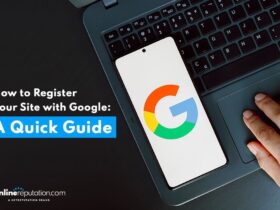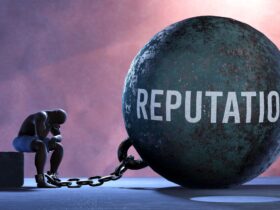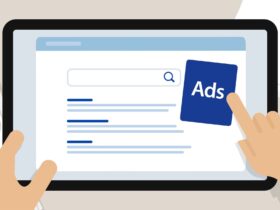You may have heard the term before, but you’re likely wondering, “What is the Streisand Effect?” Our article explains this reputation theory.
The Streisand Effect is a phenomenon that occurs when an attempt to suppress or censor information ultimately leads to its widespread dissemination and increased attention. Put another way, the Streisand Effect refers to an unintended consequence where an attempt by an individual or an organization to hide, remove, or censor certain information ends up drawing more attention to it, resulting in its viral spread and increased public interest.
Numerous examples of the Streisand Effect have emerged over the years, highlighting the power of the internet and the consequences of attempts to control information. One notable case involves American singer Barbra Streisand herself, but other instances involve celebrities, corporations, and public figures.
This article delves into understanding the Streisand Effect’s impact, mitigation strategies and more.
You can create a positive online reputation even if you’re rebounding from a PR crisis. Call us at
844-230-3803
for more information.
An Overview of the Streisand Effect: How It Brings Greater Attention To Your Content
The Streisand Effect occurs when an attempt to suppress or censor information leads to its widespread dissemination. It gets its name from singer and actress Barbra Streisand, who tried to suppress photographs of her mansion but instead drew attention to them, resulting in more publicity. This effect happens when someone’s efforts to hide information backfire, causing it to become more widely known and shared.
Exercise caution before censoring or suppressing information to avoid triggering the Streisand Effect. Consider the potential consequences and whether hiding the information may attract many more people to the content. Transparency and open communication can often be more effective in managing potentially damaging information.
Organizations should prioritize building and maintaining a positive reputation to mitigate the impact of negative information. Cultivate a strong relationship with stakeholders and the public to boost trust and credibility, making it easier to address and manage challenges.
Origins of the Streisand Effect: The Lawsuit Against the California Coastal Records Project
The Streisand Effect dates back to a 2003 incident involving Barbra Streisand, who filed a lawsuit against the coastal preservation group California Coastal Records Project to suppress photographs of her residence in Malibu. While the images that photographer Kenneth Adelman took were of the California coastline, Streisand’s home was also in the pictures.
The lawsuit was dismissed, and Barbra Streisand was ordered to pay Adelman’s legal fees. In 2005, Mike Masnick coined the term when writing about a takedown notice that Marco Beach Ocean Resort sent to a site that posted photos of urinals.
When Streisand sued Kenneth Adelman over the California coastline images, her actions had an unintended effect, as they drew significant attention and caused the photographs to go viral quickly.
Moreover, some felt that Streisand’s lawsuit, and possibly even Streisand’s lawyers, felt that they could have the aerial photos removed from an online database simply because they didn’t want them to be there. Many more people, though, felt that any type of cease and desist action would be an infringement on free speech and behavioral freedom.
How a Cease and Desist Request Can Backfire
Streisand’s California Coastal Records Project lawsuit amplified public interest, and the story gained media coverage, resulting in a surge in online searches and sharing of the images on various platforms. The attempts to suppress the photographs only fueled curiosity and intensified public scrutiny.
Consequently, this incident highlighted how attempts to hide or censor information can often result in the opposite effect, attracting attention and public interest. Ultimately, the Streisand Effect demonstrates the immense power of the internet and the potential consequences of trying to control the flow of information.
As seen in Barbra Streisand’s case, her endeavor to maintain her privacy inadvertently led to the widespread dissemination of the information she sought to suppress. This concept has become widely recognized in the digital era, illustrating how rapidly and extensively information can spread online.
It’s crucial to remember that this is not solely applicable to celebrities or those in the pop culture industry. It can affect anyone making censorship attempts, including individuals, businesses and even government agencies.
The central message to take away is that endeavors to censor or control information can often backfire, drawing even more scrutiny in this era dominated by information.
Why Is the Streisand Effect Important To Understand?

Understanding the Streisand Effect is crucial in today’s digital age. Individuals and organizations can avoid unintended consequences by being mindful of the potential repercussions of suppressing information.
The Streisand Effect works in two main ways:
- It leads to inadvertent suppression, where attempts to hide or remove information only pique curiosity and drive more people to the site to seek it out.
- It leads to amplification through attention, as the attempts to suppress the information attract media coverage and public discussion, thereby bringing it to a broader audience.
The Streisand Effect can have significant impacts and consequences, particularly regarding reputation management and legal implications. Attempts to hide or censor information can backfire and damage one’s reputation, while legal actions taken to suppress information can attract negative public perception and even legal repercussions.
Mitigating this requires a different approach. Transparency and open communication can help address concerns, as being upfront and honest can reduce speculation and rumor-mongering. Engaging with critics and responding proactively can also help control the narrative and prevent an issue from escalating.
How Does the Streisand Effect Work?
When a person or company tries to hide certain information, they may instead draw attention to it. This is a key aspect of the Streisand Effect, as it’s exactly what happened when the actress sued over the photographs.
This happens because people are naturally curious about controversial or forbidden topics, and attempts at suppression only make them more curious. As a result, the information spreads quickly through social media, news outlets, and online forums.
One example of inadvertent suppression is when a company tries to remove negative reviews or criticism from the internet. Instead of silencing the negative feedback, their actions can create backlash and attract attention to the criticism. This can harm their reputation and make the negative information even more visible to the public.
Another example is when a public figure or celebrity takes legal action to prevent the release of embarrassing or damaging information. This attempt to suppress the information can often lead to media attention and public curiosity.
Individuals and companies must consider the potential consequences before attempting to suppress content. It is often better to address concerns openly and transparently rather than trying to hide or censor them. By acknowledging and addressing the issues, it is possible to mitigate the effects of inadvertent suppression.
Legal Consequences Related to the Streisand Effect
The Streisand Effect can have significant legal consequences for individuals or organizations attempting to suppress information:
- Attempts to suppress content can draw attention, leading to public backlash and erosion of privacy rights.
- Individuals or organizations may claim copyright infringement to remove content from public view. If seen as an overreach or an attempt to silence criticism, it can trigger the Streisand Effect, raising questions about the validity of the copyright claim and potentially damaging the claimant’s reputation.
- Attempts to suppress information can violate freedom of speech rights. This can result in public support for disseminating the information and increased attention and scrutiny.
Considering the legal implications before attempting to suppress content is crucial, as it can inadvertently amplify the spread of information and result in negative consequences.
How Reputation Management Can Help You Avoid the Streisand Effect

Reputation management is crucial in mitigating the negative consequences of the Streisand Effect. Here are some key strategies to consider:
- Reputation Monitoring: It’s important to regularly monitor online platforms and social media channels to stay aware of any negative mentions or discussions about your brand. Make use of reputation management tools to track your online reputation.
- Communication: Address any negative content or criticism promptly and professionally. By responding quickly, you demonstrate that you take concerns seriously and are actively managing your reputation.
- Transparency: Ensure transparency with customers and stakeholders. Provide accurate information, address misconceptions, and be open to feedback and suggestions.
- Engage with Critics: Instead of ignoring or dismissing negative comments, take the opportunity to engage with your critics constructively. Address their concerns, provide solutions, and showcase your commitment to improving customer satisfaction.
- Build a Positive Brand Image: Cultivate a positive brand image by consistently focusing on branding, delivering excellent products or services, and actively engaging with your target audience. Building a strong reputation is the best defense against potential damage from the Streisand Effect.
When companies face negative publicity due to controversies or scandals, they use proactive reputation management techniques to rebuild trust and restore their reputation. By promptly addressing concerns and public sentiments and emphasizing their commitment to change, these companies were able to regain customer confidence and rebuild their brand image.
Reputation management is a key component of successful crisis communication and maintaining a positive brand reputation in the digital age. Get in touch with our expert at
844-230-3803
to learn more.
How To Engage With Critics and Respond Proactively
Engaging with critics and responding proactively is crucial in mitigating the Streisand Effect. Here are strategies to consider:
- Listen to Feedback: Listen to what critics say, and understand their concerns and viewpoints.
- Respond Promptly: Address criticism promptly to show seriousness.
- Show Empathy: Demonstrate that you value feedback and understand its impact.
- Be Transparent: Provide clear and honest information to address misconceptions.
- Apologize: Take responsibility and sincerely apologize for mistakes.
- Offer Solutions: Propose practical steps to address the raised issues.
- Take Action: Follow through on your promises.
By paying attention to your audience, acknowledging mistakes, and making things right, you can turn criticism into an opportunity for growth and improvement. Even one simple act can make a big difference.
Prevent Most People From Seeing Negative Information About You


Individuals or organizations unintentionally bring attention to juicy information with the act of trying to suppress it. The more they try to hide or silence the information, the more it spreads and reaches a larger audience.
Understanding the power of amplification through attention is crucial in managing crises or situations that could lead to negative publicity. Instead of trying to suppress information, addressing the issue openly and transparently is often more effective, engaging with critics proactively and providing accurate information to minimize the impact and consequences.
In the quest to understand and mitigate this online phenomenon, key strategies can be employed. One can navigate the potential fallout of this phenomenon by embracing transparency and open communication, engaging with critics, and responding proactively. These methods not only help in managing the impact but also promote a constructive dialogue with the audience.
Contact Us Today
At OnlineReputation.com, we work with individuals and businesses who are dealing with unwanted media attention and need to improve their public perception. Whether you have personal reasons or serious security reasons to control what information is online, we can help.
To prevent a greater spread of negative information, we offer a range of ORM services, including ad management, search engine optimization, review monitoring, content removal and more.
Get started with a free analysis here or explore our services offered through our parent company, NetReputation.
















Leave a Reply